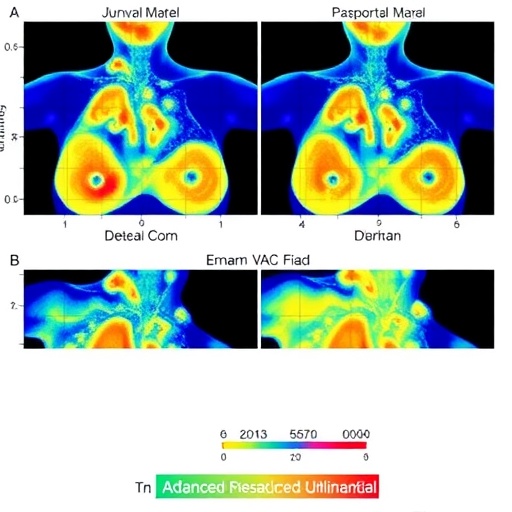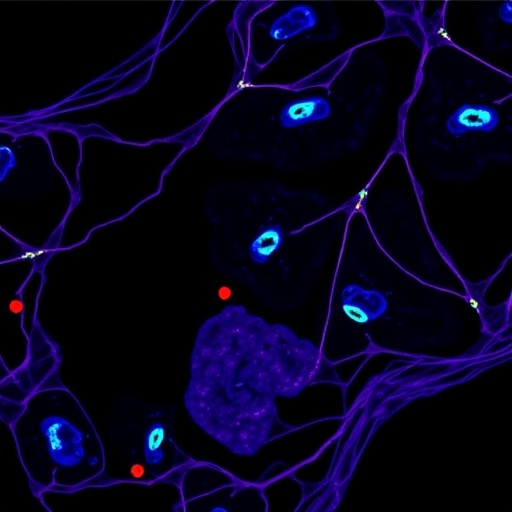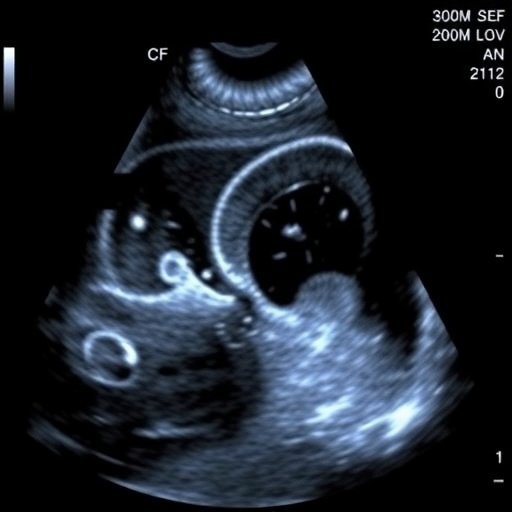In the rapidly evolving realm of cancer prognosis, survival analysis stands as a central pillar for understanding patient outcomes and informing treatment strategies. A new study published in BMC Cancer pushes the boundaries of this domain by scrutinizing the predictive power of Accelerated Failure Time (AFT) frailty models augmented with cutting-edge regularization methods. This extensive investigation, involving both simulated and real breast cancer datasets, offers unprecedented insights into how intricate statistical models can unveil the underlying factors shaping survival dynamics in breast cancer patients.
Survival analysis has long incorporated frailty models to account for unobserved heterogeneity — the individual differences in risk factors not directly measured but influencing survival time. Yet, choosing the most efficient frailty model becomes particularly intricate when researchers grapple with high-dimensional data, a common scenario in contemporary genomics and clinical datasets. This study rises to this challenge by evaluating seven different AFT frailty models — Weibull, Log-logistic, Gamma, Gompertz, Log-normal, Generalized Gamma, and Extreme Value — and coupling their performance with sophisticated regularization techniques such as LASSO, Ridge, and Elastic Net.
What distinguishes the Accelerated Failure Time framework is its direct interpretability, modeling how covariates accelerate or decelerate the time until an event, such as death or relapse, occurs. However, frailty models add an additional layer of complexity by allowing random effects to embody patient-specific risk factors that remain unobserved but significantly impact survival. The researchers measured model efficacy through multiple robust criteria — Akaike Information Criterion (AIC), Bayesian Information Criterion (BIC), as well as prediction errors quantified by Mean Absolute Error (MAE) and Mean Squared Error (MSE).
A standout finding emerged from the comparison: the Extreme Value Frailty AFT model consistently outperformed all other candidates across varying sample sizes (25%, 50%, and 75%). This model exhibited the lowest values of AIC and BIC, underscoring an optimal balance between model complexity and goodness-of-fit. Moreover, its predictive accuracy, as demonstrated through reduced MAE and MSE scores, confirmed its robustness. These quantitative markers point to the Extreme Value model as a superior statistical instrument to predict breast cancer outcomes effectively.
Model interpretability remains a critical priority, especially when translating analytical insights into clinical decisions. Here, regularization techniques provided a substantial boon. Specifically, LASSO (Least Absolute Shrinkage and Selection Operator) regularization refined the model structure by shrinking insignificant covariate coefficients to zero, thereby enhancing parsimony without sacrificing predictive fidelity. Non-informative variables like age, progesterone receptor status (PR), and hospitalization were systematically excluded, sharpening the focus on pivotal predictors that influence survival.
Among the variables retained by the LASSO-regularized Extreme Value model were competing risks, metastasis, cancer stage, and lymph node involvement. These factors stood out as the most critical determinants of prognosis. Intriguingly, the study quantified the survival advantage conferred by these parameters. For example, patients without metastasis enjoyed an expected survival time approximately two and a half times longer than those with metastatic disease. Similarly, those diagnosed at lower cancer stages experienced about a 26% increase in survival duration, while minimal lymph node involvement corresponded to a 16% improvement.
Further, molecular markers and tumor characteristics held independent prognostic weight. Patients with HER2-negative tumors showed a 20% longer expected survival compared to their positive counterparts. The absence of the aggressive Triple Negative breast cancer subtype also translated into a 15% survival extension. Tumor grade exhibited a parallel trend, where lower grades aligned with an 11% longer survival period. Likewise, the presence or absence of recurrence impacted survival, with recurrence associated with a 19% reduction.
Beyond statistical validation, the research illuminated clinically meaningful subgroup stratification. By classifying patients into Low, Medium, and High-risk cohorts based on their covariate profiles, the model revealed distinct survival trajectories. This stratification aligns seamlessly with Kaplan–Meier survival curves, which displayed pronounced survival declines linked to metastasis, lymph node status, tumor grade, HER2 status, and molecular subtypes. Such detailed risk categorization can empower oncologists to tailor treatment intensity and monitoring frequency more precisely.
The findings also highlighted the nuanced role of competing risks in survival analysis, especially risks related to hospitalization events. These competing risks significantly affect patient outcomes, suggesting that integrated treatment approaches addressing both cancer progression and comorbid conditions are vital. This dual focus underscores the necessity of holistic patient management strategies, which blend oncologic care with addressing ancillary health issues.
By contrast, traditional models frequently struggle with overfitting when applied to high-dimensional clinical data, diluting their generalizability. The rigorous application of LASSO and similar regularization techniques effectively counters this challenge by shrinking noisy or redundant predictors, thereby bolstering model stability. Through this dimensionality reduction, the Extreme Value Frailty AFT model achieves a powerful synergy of precision and interpretability.
A particularly illuminating aspect of the study involves the comparative performance metrics across sample sizes. Even when working with just 25% of the dataset, the Extreme Value model retained superiority, as evidenced by its AIC score of 100.41, outperforming the second-best Log-logistic model. This consistency across data scales validates the model’s adaptability and resilience, critical features for real-world applications where data availability can fluctuate.
The underlying theoretical appeal of the Extreme Value distribution in frailty modeling lies in its ability to accommodate heavy-tailed survival times and extreme observations, which standard distributions like Weibull or Gamma may inadequately capture. Such flexibility proves invaluable in oncology, where patient responses often exhibit significant variability. By properly modeling this heterogeneity, survival predictions become more accurate and clinically actionable.
Importantly, the meticulous forest plot analyses provided a graphical representation of the covariates’ hazard ratios and confidence intervals, visually substantiating the statistical claims. This visualization further highlighted the dominant influence of key clinical variables such as metastasis and lymph node involvement, reinforcing their prognostic significance.
Complementing the quantitative analysis, Kaplan–Meier survival curves offered intuitive illustrations of clinical subgroup differences. These plots revealed stark survival disparities across molecular subtypes, with Triple Negative and HER2-overexpressing breast cancers manifesting the poorest outcomes. This empirical evidence not only corroborates previous clinical observations but also magnifies the urgency for subtype-specific therapeutic innovations.
The study’s integrative framework demonstrates the power of combining advanced statistical methodologies with pragmatic model selection and validation. It charts a course toward personalized prognostic tools capable of guiding clinical decisions and optimizing patient outcomes. As data complexity in oncology escalates, such methodological rigor will become indispensable.
Ultimately, this research transcends the confines of breast cancer prognosis, indicating broader applicability across diverse medical conditions characterized by survival data with embedded heterogeneity. By harnessing regularized frailty models like the Extreme Value AFT, researchers and clinicians alike gain a potent toolkit for unmasking subtle predictors and refining risk assessments.
The study’s implications resonate deeply within the precision medicine movement — a paradigm that seeks to tailor diagnostics and therapeutics to individual patient profiles. Sophisticated survival models capable of identifying key prognostic variables while mitigating overfitting are essential ingredients in this transformative endeavor. With increasing computational power and richer datasets, such approaches will likely shape the future of medical research and personalized patient care.
In sum, the pioneering work by Bosson-Amedenu and colleagues underscores the critical impact of sophisticated statistical modeling in enhancing breast cancer survival predictions. Through systematic evaluation, the Extreme Value Frailty AFT model combined with LASSO regularization emerges as a formidable approach, offering refined interpretability, improved prediction accuracy, and valuable clinical insights. This advancement fortifies the armamentarium of oncologists, biostatisticians, and epidemiologists striving to decode the complexity of cancer progression and improve patient prognoses worldwide.
—
Subject of Research: Breast cancer survival prediction using advanced Accelerated Failure Time frailty models enhanced by regularization techniques.
Article Title: Evaluating key predictors of breast cancer through survival: a comparison of AFT frailty models with LASSO, ridge, and elastic net regularization
Article References:
Bosson-Amedenu, S., Ayitey, E., Ayiah-Mensah, F. et al. Evaluating key predictors of breast cancer through survival: a comparison of AFT frailty models with LASSO, ridge, and elastic net regularization.
BMC Cancer 25, 665 (2025). https://doi.org/10.1186/s12885-025-14040-z
Image Credits: Scienmag.com
DOI: https://doi.org/10.1186/s12885-025-14040-z
Tags: Accelerated Failure Time modelsadvanced cancer prognosis methodsbreast cancer survival analysisbreast cancer treatment strategiescomparative analysis of frailty modelsfrailty models in cancer researchhigh-dimensional data in genomicsLASSO and Ridge regression applicationspredictive modeling in oncologyregularization techniques in statisticsstatistical models for patient outcomesunobserved heterogeneity in survival data





